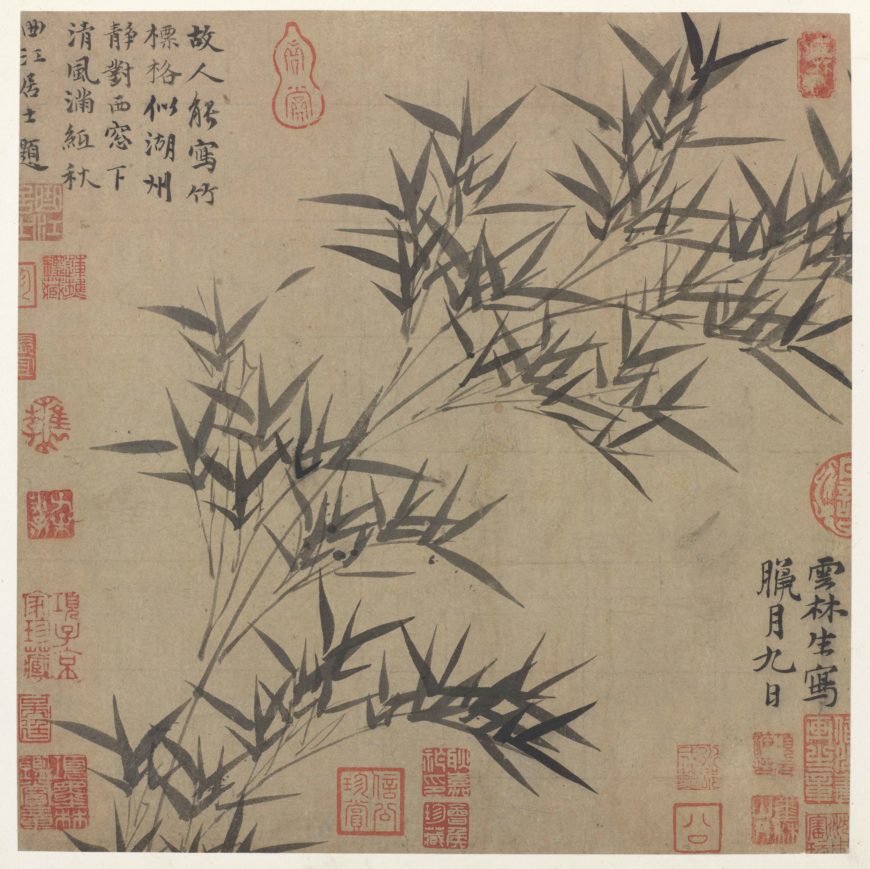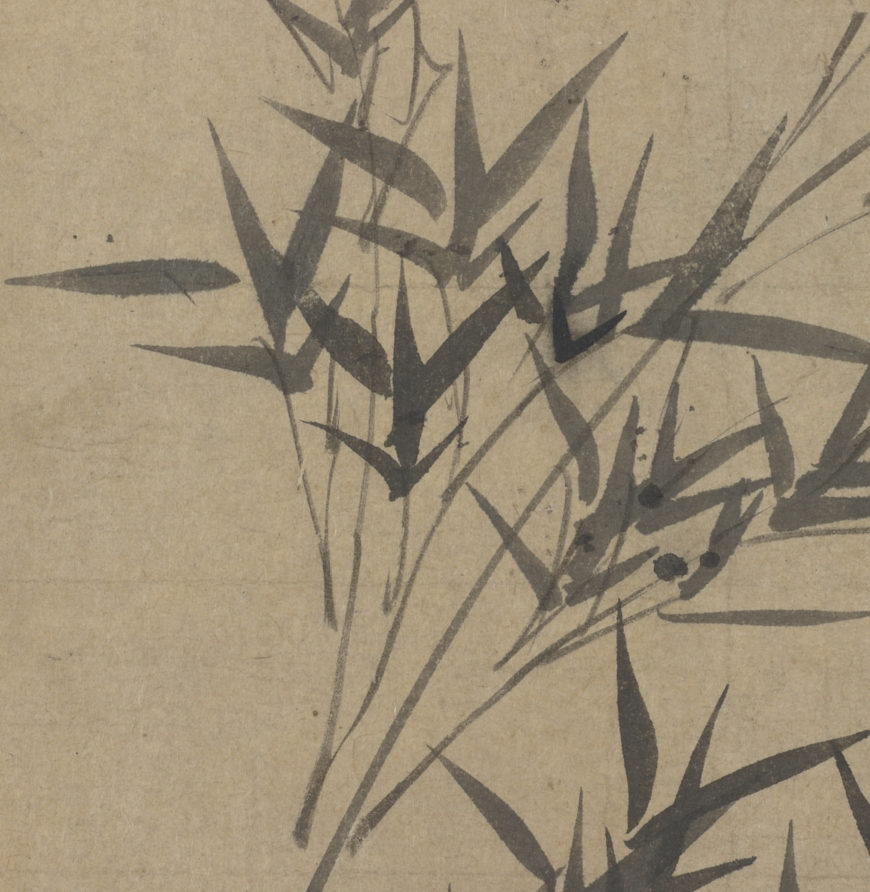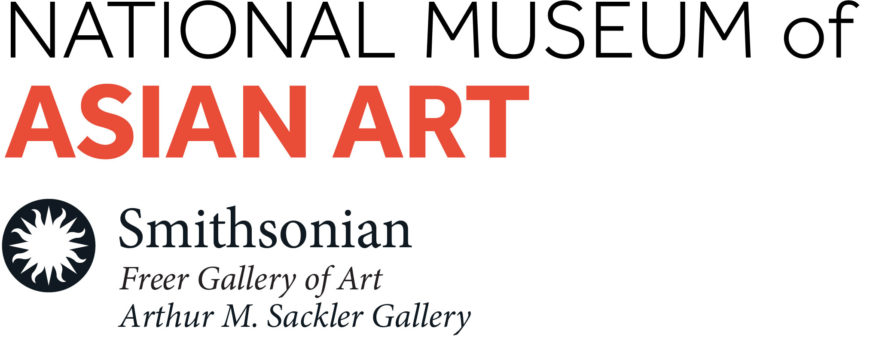
Ni Zan 倪瓚 (1306–1374), A Branch of Bamboo, Yuan or Ming dynasty, c. 1369, Inscription by Qian Weishan (1341–c. 1379), ink on paper, China, 29.3 x 29 cm (Freer Gallery of Art, Smithsonian Institution, Washington, DC: Gift of Charles Lang Freer, F1915.36d)
In this painting, the artist Ni Zan (1306–1374) chooses a simple and clean arrangement: the diagonal composition. A stem of bamboo is silhouetted against a plain background and ascends from the lower left corner to the upper right corner in a slight arc. The branches are light and sketchy. The leaves, stretching outward and upward, release a dynamic vitality. The painting is done in monochrome (single color) ink. The brush strokes are the same as in calligraphy for writing Chinese characters. The poet Qian Weishan (act. 1341–c. 1379) added a few brief lines at upper left to honor Ni Zan after his death:
My old friend knew how to sketch bamboo,
And patterned his approach upon Wen Tong [eleventh century painter].
Calmly he looked out the western window,
And the cool wind filled his page with fall.
Translation by Stephen D. Allee
The painting is covered at its edges with red collectors’ seals, suggesting a rich collecting history.

Ni Zan 倪瓚 (1306–1374), A Branch of Bamboo (detail), Yuan or Ming dynasty, c. 1369, Inscription by Qian Weishan (1341–c. 1379), ink on paper, China, 29.3 x 29 cm (Freer Gallery of Art, Smithsonian Institution, Washington, DC: Gift of Charles Lang Freer, F1915.36d)
This painting is typical of Ni Zan’s quick, spare style. He does not bother to achieve realism, such as depicting the nodules on the branches or carefully correlating leaves to their twigs. He claims in one of his writings that he does not care whether his depictions look like bamboo or not, whether the leaves are dense or sparse, or whether the branches are bent or straight. His bamboo painting was to serve as an outlet for the inspirations coming from his heart. The album leaf format is perfect for this purpose. Small in scale, it is ideal for the artist to express his thoughts and to take the viewer into an intimate and spiritual realm.
Bamboo has been depicted in Chinese painting for more than a thousand years. Along with the pine and the plum, bamboo is a member of the Three Friends of Winter for its ability to bear the harshest of winters. It is also one of the Four Gentlemen (the other three being the plum, the orchid, and the chrysanthemum) for the moral virtues it represents. The hollowness of the bamboo stalk symbolizes tolerance and open-mindedness. Its flexibility and strength signify the human values of cultivation and integrity: one yields but does not break. All these virtues make bamboo a very popular subject in Chinese painting, especially among scholar-artists.
 This resource was developed for Teaching China with the Smithsonian, made possible by the generous support of the Freeman Foundation
This resource was developed for Teaching China with the Smithsonian, made possible by the generous support of the Freeman Foundation

